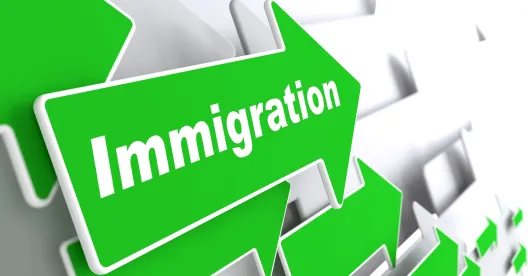We previously reported on the disturbing Request for Evidence (RFE) trend where investors and their attorneys were not receiving RFEs in the mail even though the case status showed that one was issued. We are now reporting on another trend, this time in the substance of the RFEs and the results from submitting responses, specifically to the RFEs that request additional evidence from third-party money exchangers.
We note that attorneys are seeing some Notices of Intent to Deny (NOID) issued due to a lack of evidence on the source of funds of a third party money exchanger, when such a service is used. To combat this, we provide the following practice tips for different scenarios and the different types of evidence that can be submitted along with the initial I-526 petition.
By way of background, a third-party exchange occurs when an investor sources his or her funds and, due to currency restrictions, is not able to transfer the $500,000 investment to the United States from the originating country. The investor would then solicit the help of a friend or family member, who already has funds sitting outside the country, to transfer the USD equivalent to the United States. The parties agree to “swap” equivalent amounts of their currencies via a contractual agreement.
The recent trends are listed below, along with the types of evidence that can be included with the I-526 petition which may help show that the investor’s source of funds is lawful:
-
Information about the friend or family member participating in the currency swap:
Recent RFEs and NOIDs have requested more information about the third-party exchanger, including biographical documents and work history. To address this issue, in addition to a passport biographic page and a memorandum/statement, the third-party exchanger can provide a detailed resume, work employment history in the form of employment letters, as well as tax payment records for the last five years.
2. Information questioning how the friend or family member was able to convert money over time in the overseas bank account:
In a currency swap, the third-party exchanger already has over $500,000 accumulated in a bank account, ready to transfer to the United States. USCIS recently has started requesting evidence that the exchanger’s funds actually accumulated in the foreign bank account overtime and were from lawful sources. To show this, the third-party exchanger should be prepared to show bank statements over a period of years. For this point, a brief source of funds analysis is necessary for the exchanger, in that the following needs to be shown: 1) accumulation of income in bank accounts; 2) the transfer of those lawful funds into the exchanger’s account; and 3) the accumulation of the funds in the overseas bank account. The best evidence of this is typically bank statements.
3. Third-party exchanger did not provide evidence of accumulation of funds:
This point relates back to point #1, where more information about the third-party exchanger is necessary. USCIS is taking the position that the third-party exchanger will need to provide accumulation of income if that is where the funds originate. This may mean providing bank statements showing that the third-party exchanger has been able to accumulate salary, and of course, providing employment information, including employment letters, tax payment proof, and employer information.
As we receive more information about new trends, we will update our blogs so that investors can be more prepared for submitting additional information either with the initial I-526 petition or for an RFE response.



 />i
/>i

